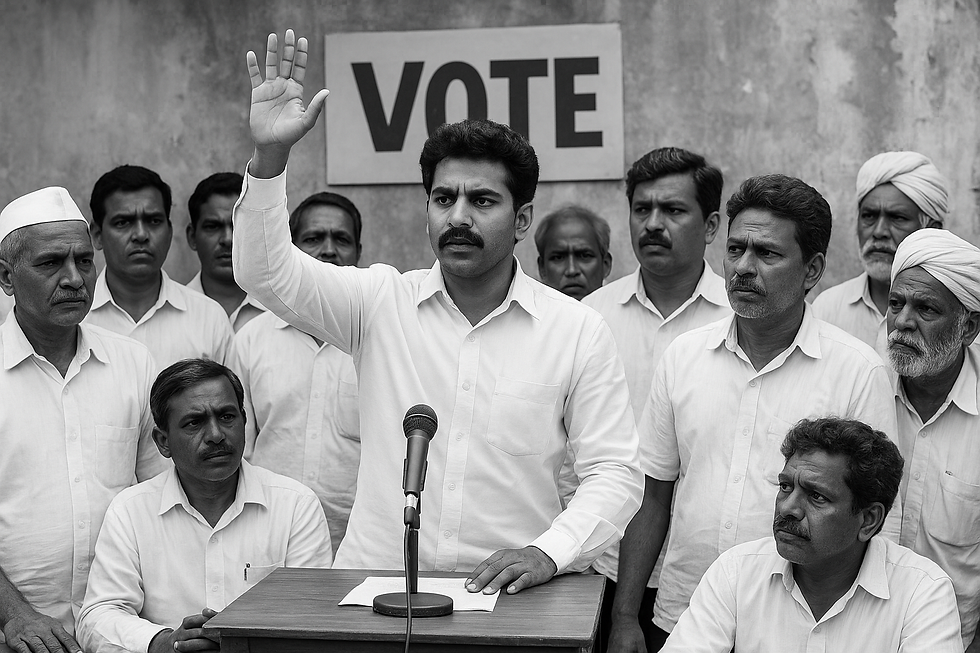A Clear Case of Breach of Natural Justice: Supreme Court Quashes Excise Demand in Oswal Petrochemicals Case
- Chintan Shah

- Apr 29
- 4 min read
Case Summary
Case Name: M/s Oswal Petrochemicals Ltd. v. Commissioner of Central Excise, Mumbai-II
Citation: 2025 INSC 578
Date of Judgment: 28 April 2025
Coram: Hon’ble Mr Justice Abhay S. Oka and Hon’ble Mr Justice Ujjal Bhuyan
Appeals: Civil Appeal Nos. 129-130 of 2011 and Civil Appeal No. 131 of 2011
Appellant’s Counsel: Senior Advocate (name not specified)
Respondent’s Counsel: Counsel for Union of India (name not specified)
Acts and Rules:
Central Excise Act, 1944 – Section 35L(b)
Central Excise Rules, 1944 – Rules 9B and 56
Central Excise Tariff Act, 1985
Key Sections Involved:
Chapter Sub-Headings 2707.10, 2707.20, 2902.00
Rule 173B (classification list)
Cited Judgments:
Coastal Gases and Chemicals Pvt. Ltd. v. Assistant Collector of Central Excise (1997) 7 SCC 223
Metal Forgings v. Union of India (2003) 2 SCC 36
CCE Calcutta v. Hindustan National Glass & Industries Ltd. (2005) 3 SCC 489
Introduction
The Supreme Court’s ruling in Oswal Petrochemicals is a significant reaffirmation of the procedural safeguards inherent in excise law, particularly around re-classification and provisional assessments. The judgment provides clarity on the limits of departmental discretion and underscores the inviolability of natural justice.
I. Background and Procedural History
The dispute arose from the classification of Benzene and Toluene. Oswal Petrochemicals had classified these under Chapter 29 (sub-heading 2902.00) of the Central Excise Tariff, claiming relevant exemptions. This classification was approved by the Assistant Collector on 26 April 1990. However, based on later test reports indicating purity below 96%, the department reclassified the products under Chapter 27, attracting a higher duty.
Show-cause notices followed, alleging misclassification and demanding differential duty totalling over ₹2 crore. Oswal contested these notices, primarily arguing non-communication of test reports and absence of provisional assessment.
The litigation journey traversed multiple forums—Collector (Appeals), CEGAT, Commissioner (Appeals), and ultimately the CESTAT—which partially upheld the demands. Aggrieved, Oswal moved the Supreme Court.
II. Re-Classification Without Disclosure of Test Reports: A Violation of Natural Justice
The crux of the dispute lies in the reliance on test reports dated 29.01.1991 without sharing them with the appellant. The Court categorically held that:
"Informing the appellant only the gist of the test reports cannot be said to be in compliance with the principles of natural justice."
The Court emphasised that the test reports formed the substratum of the re-classification and resulting duty demand. Thus, non-disclosure denied the appellant the statutory right to challenge or seek re-testing as per Rule 56(4) of the Central Excise Rules.
Rule 56(2) mandates:
"The officer... shall conduct the test from the samples taken... and communicate to the manufacturer the result of such test."
The Court rejected the department’s argument that summarising the test results in the show-cause notice was sufficient.
"Such a procedure is not contemplated under Rule 56. That apart, it will defeat the right of a manufacturer to seek re-test if he is aggrieved by the result of the test."
This interpretation provides much-needed judicial clarity on Rule 56, reinforcing that full disclosure is not optional but mandatory when tests form the basis for adverse actions.
III. Department’s Procedural Lapses in Provisional Assessment
Another vital issue was whether the assessments for January and February 1993 were provisional. The department claimed they were, seeking to evade the bar of limitation under Section 11A.
However, the Supreme Court discredited this assertion, underscoring that provisional assessments under Rule 9B require three cumulative conditions:
A written request by the assessee or a specific direction by the proper officer.
An express written order for provisional assessment.
Execution of a B-13 bond with security.
None of these were fulfilled.
"Mere endorsement by the concerned Superintendent on two RT-12 returns cannot make an assessment provisional."
The Court also clarified that retrospective application of the provisional assessment order dated 18.10.1993 was untenable. It could not retroactively convert regular assessments into provisional ones.
Quoting Metal Forgings (2003), the Bench reaffirmed:
"To establish that the clearances were made on a provisional basis, there should be... an order under Rule 9B... [and] payment of duty was also made on that basis."
Thus, the CESTAT's finding on provisionality for January–February 1993 was deemed perverse and contrary to the law.
IV. The Role of Classification Approval under Rule 173B
Another notable point addressed was the significance of the classification approval by the Assistant Collector under Rule 173B.
The Court observed that if the department doubted the correctness of classification, it should have:
Drawn samples before approval.
Acted promptly.
Not relied on tests conducted long after classification approval.
"Approval of classification list under Rule 173B is not an empty formality. The proper officer has to apply his mind."
This has implications for revenue authorities—highlighting the sanctity of approved classifications and the procedural discipline required to disturb them.
V. Conclusion and Implications
The Supreme Court set aside the impugned CESTAT order and quashed the demand of ₹2 crore, affirming the appellant’s contentions. The decision:
Reinforces natural justice as non-negotiable in fiscal adjudication.
Clarifies Rule 9B compliance is a sine qua non for provisional assessments.
Imposes accountability on revenue authorities to follow procedure, especially where taxpayer liabilities are altered retroactively.
Signals to tribunals the need for judicial discipline in appreciating statutory requirements.



Comments